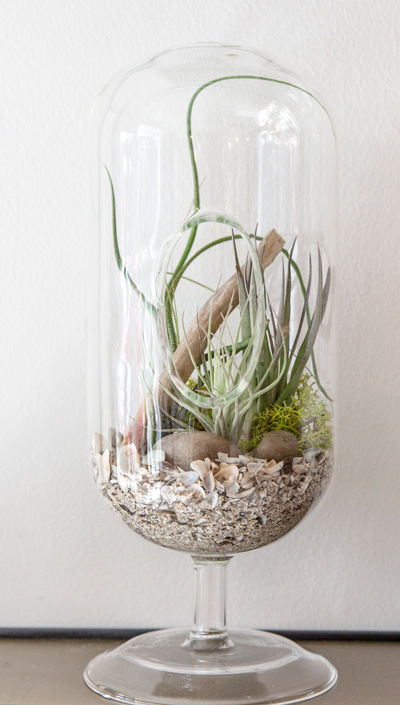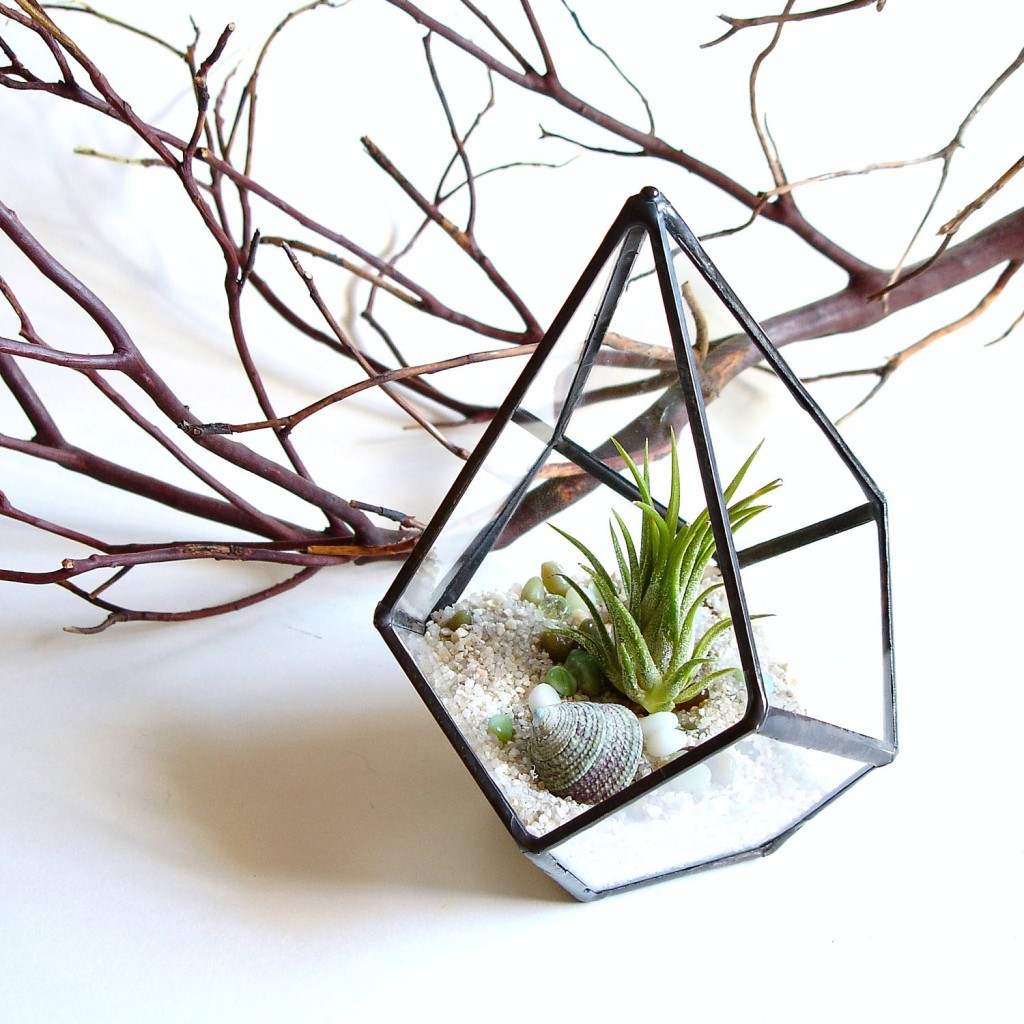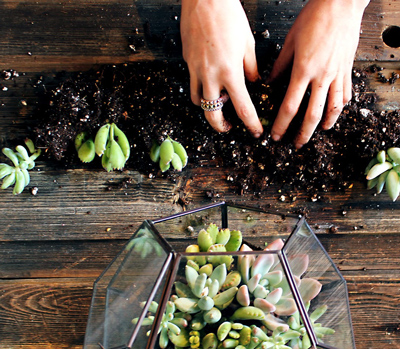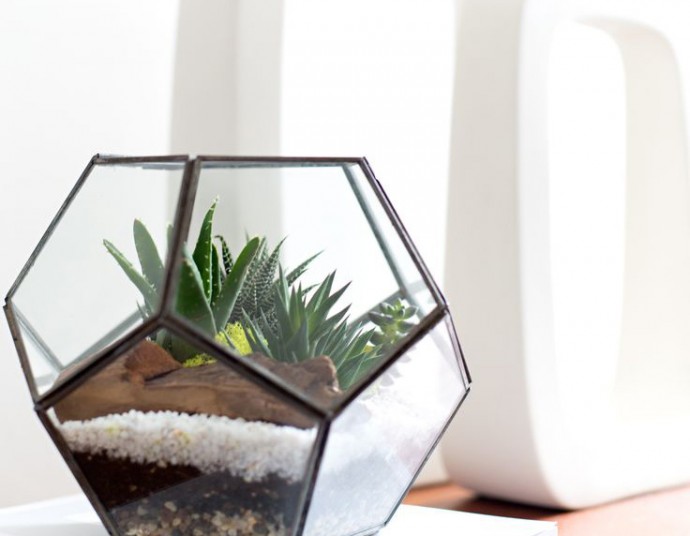When it’s bleak or blanketed with snow outside, you can still keep your hopes alive for spring by having greenery indoors. Both air plants and terrariums offer a low maintenance way to cultivate your green thumb. Spiky, alien-like air plants can thrive anywhere, even on a fridge magnet, whereas terrariums are like small self-contained eco systems.

Plant Fancy
Air plants (Tillandsias) are part of the orchid family, and can live for up to eight years – no soil required. They’re found naturally in tropical regions, attaching themselves to bark and other natural surfaces. “I find that air plants are almost architectural,” says Jennifer Klassen, manager at Centro Garden in Burlington. “They have a form to them, so people use them as adécor piece. Some of the bigger ones, (called ‘zero graphica’), are made to sit on the table on their own.They’re quite large.” Smaller plants can be grouped in twos or threes and Klassen suggests grouping plants with different textures and varying leaf sizes with other items such as rocks or moss. They can be displayed practically wherever your crafty imagination takes you: on a tabletop or hanging in a glass globe, on a wall, on pieces of wood, as a fridge magnet or even set in seashells. Erica Lowartz-Cozzarin of Sheridan Nurseries also suggests they can be a beautiful alternative for the bride. “These (plants) have gained popularity as bouquets for weddings because they’re so adaptable,” she says.
Know Your Roots
Air plants don’t actually have root systems, but instead they ta ke in nutrients through their leaves. “You can water them by putting them in a bowl or dish with water and let it sit for about 15 minutes,” says Klassen. “It soaks up all the water through the leaves. Do that about once a week.” Succulents, which are often used in terrariums, have a thick leaf and need little watering. “They hold a lot of water and have a root system so you’d water them once every two weeks or once a month, depending on where they’re located in your home.
ke in nutrients through their leaves. “You can water them by putting them in a bowl or dish with water and let it sit for about 15 minutes,” says Klassen. “It soaks up all the water through the leaves. Do that about once a week.” Succulents, which are often used in terrariums, have a thick leaf and need little watering. “They hold a lot of water and have a root system so you’d water them once every two weeks or once a month, depending on where they’re located in your home.
Terrarium Firma
Another way to incorporate interest and live plants into your home is with a terrarium. Think of it as an aquarium, but for plants instead of fish (and with way less water). All you need is a glass container with a lid and you can create a miniature garden or forest. To create your own, start with a clear glass container with a lid (even a Mason jar), place a bit of charcoal at the bottom, and then add a bit of soil. “It doesn’t need much water at all,” explains Klassen. “If you find there’s condensation inside, take the lid off for a day to let some of that moisture out. They’re self-sufficient eco systems,” she says, and they do best in a brightly lit room. Along with  succulents, Lowartz-Cozzarin suggests you put some cacti and fairy gardening plants into the arrangement. “You can even go with something exotic such as an orchid,” she says. “Mosses and spreading plants, such as babytears, act as carpets and they can work well also.” Practically anything can be added to a terrarium, provided it matches the scale. Try incorporating rocks, different coloured mosses, driftwood sticks or fungus from a tree. Lowartz-Cozzarin suggests any rocks or fairy gardening pieces would make great accessories. Before creating your terrarium or displaying your air plants, take the kids out for a nature walk and have them collect items along the way. If by chance they find a unique log, bring that home too and create your own unique piece.
succulents, Lowartz-Cozzarin suggests you put some cacti and fairy gardening plants into the arrangement. “You can even go with something exotic such as an orchid,” she says. “Mosses and spreading plants, such as babytears, act as carpets and they can work well also.” Practically anything can be added to a terrarium, provided it matches the scale. Try incorporating rocks, different coloured mosses, driftwood sticks or fungus from a tree. Lowartz-Cozzarin suggests any rocks or fairy gardening pieces would make great accessories. Before creating your terrarium or displaying your air plants, take the kids out for a nature walk and have them collect items along the way. If by chance they find a unique log, bring that home too and create your own unique piece.
Written by Becky Dumais
Local Links:
Centro Garden, Burlington
centrogarden.com
Terra Greenhouses – Burlington/Milton
terragreenhouses.com
Sheridan Nurseries – Oakville/Mississauga
sheridannurseries.com
-By Becky Dumais







